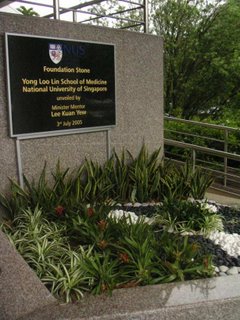
Didnt know such a stone existed until a few days ago.
Analysis of the endocytic pathway mediating the infectious entry of mosquito-borne flavivirus West Nile into Aedes albopictus mosquito (C6/36) cells
J.J.H. Chua, P.W.H. Leonga and M.L. Ng, a,
aFlavivirology Laboratory, Department of Microbiology, 5 Science Drive 2, National University of Singapore, Singapore 117597, Singapore
Received 21 November 2005; revised 28 December 2005; accepted 18 January 2006. Available online 21 February 2006.
The initial interaction between mosquito-borne flavivirus West Nile and mosquito cells is poorly characterized. This study analyzed the endocytic and the associated signaling pathway that mediate the infectious entry of West Nile virus (WNV) into mosquito cell line (C6/36). Pretreatment of C6/36 cells with pharmacological drugs that blocks clathrin-mediated endocytosis significantly inhibited virus entry. Furthermore, the transfection of functional blocking antibody against clathrin molecules and the overexpression of dominant-negative mutants of Eps15 in C6/36 cells caused a marked reduction in WNV internalization. WNV was shown to activate focal adhesion kinase (FAK) to facilitate the endocytosis of virus but not the mitogen-activated protein kinases (ERK1 and ERK2). Subsequent to the internalization of WNV, the virus particles are translocated along the endosomal pathway as revealed by double-immunofluorescence assays with anti-WNV envelope protein and cellular markers for early and late endosomes. Specific inhibitor for protein kinase C (PKC) was shown to be highly effective in blocking WNV entry by inhibiting endosomal sorting event. The disruption of the microtubule network using nocodazole also drastically affects the entry process of WNV but not the disruption of actin filaments by cytochalasin D. Finally, a low-pH-dependent step is required for WNV infection as revealed by the resistance of C6/36 cells to WNV infection in the presence of lysosomotropic agents.
Keywords: Flavivirus; Virus entry; Clathrin-mediated endocytosis; Endosome; Cytoskeleton